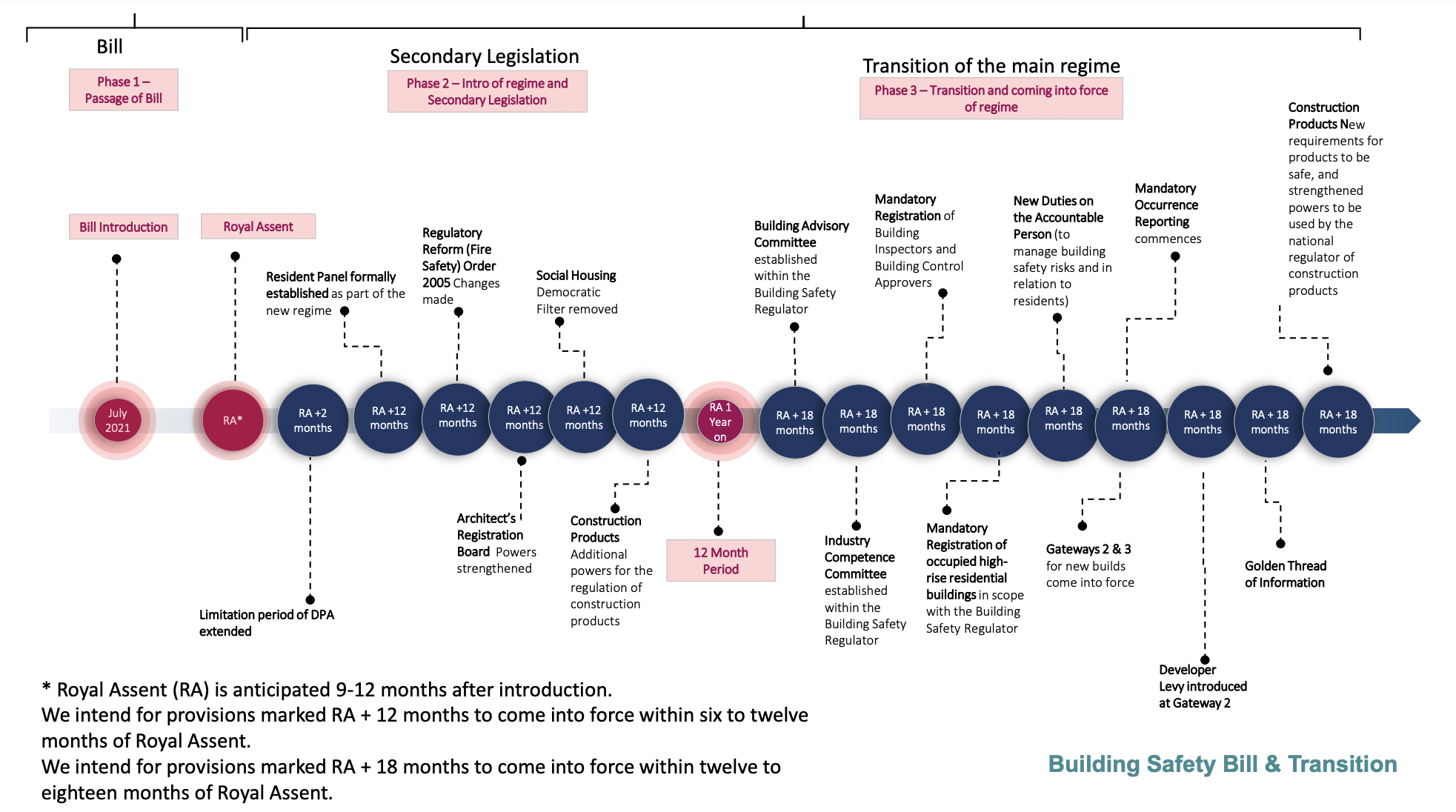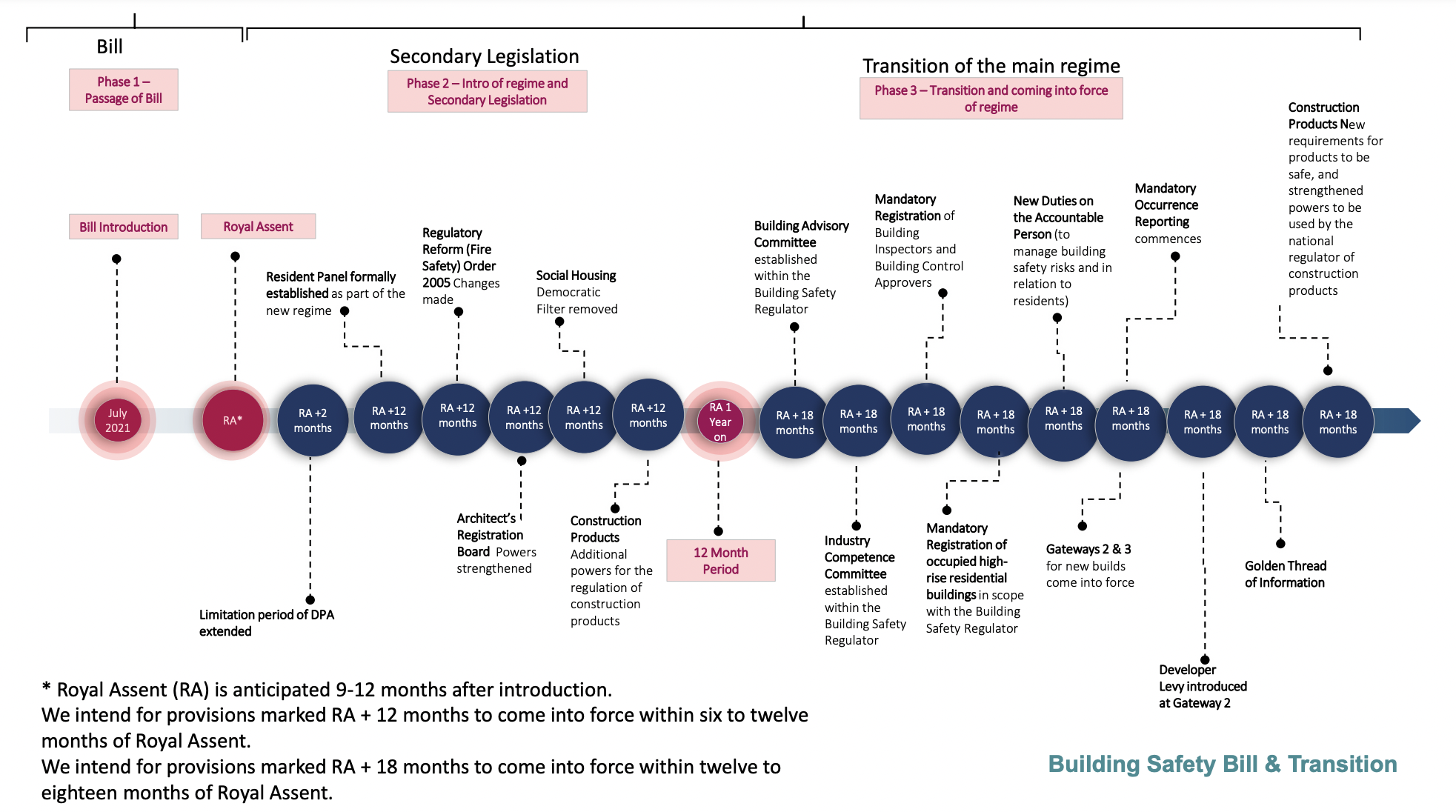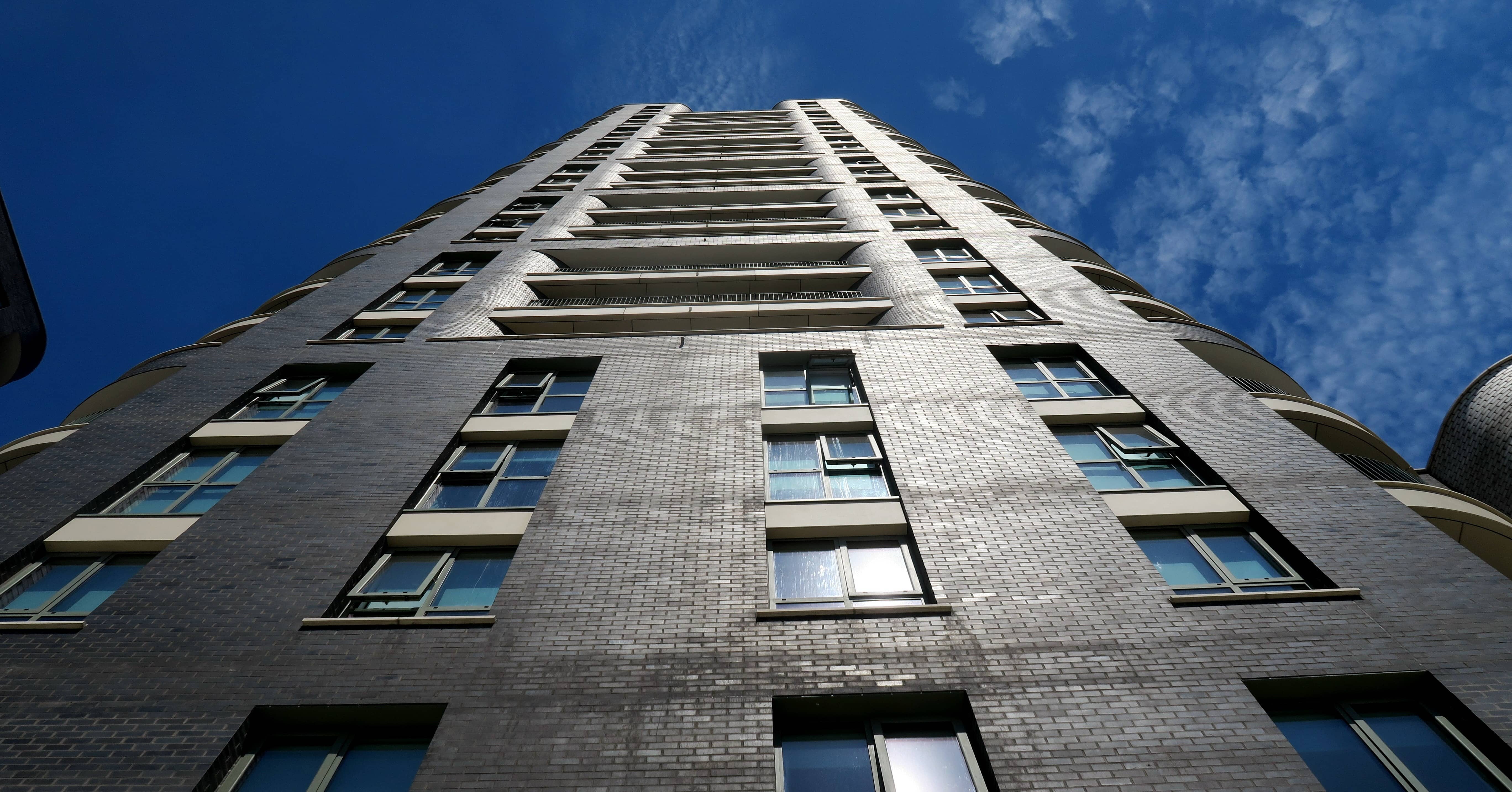The Building Safety Act Received Royal Assent One Year Ago

The Building Safety Act received royal assent one year ago, what has changed and been enforced?
As stated by the House of Commons, ‘A Bill to make provision about the safety of people in or about buildings and the standard of buildings, to amend the Architects Act 1997, and to amend provision about complaints made to a housing ombudsman.’
Over the last year, many parts of the Act have been enforced. The Act represents one of the most critical steps forward in terms of building safety since the Hackitt Report and the most significant for building fire safety in decades.
Following Royal Assent, the Government outlined a number of changes that would come into force within the first 12 months. A summary of these is as follows:
- Establishing the Residents’ Panel within the Building Safety Regulator.
- Changes to the Regulatory Reform (Fire Safety) Order 2005.
- Architect’s Registration Board Powers strengthened.
- Social Housing Democratic Filter Removed
- Construction Products Additional powers for the regulation of construction products

Whilst we had the initial wave of provisions come into force in the first 12 months, the more significant changes are due to come into force 12 months after royal assent. With the changes in relation to Mandatory Registration of Higher Risk Buildings, the introduction of Mandatory Occurrence Reporting and the obligations in relation to the Golden thread of Information coming into force 12-18 months after royal assent.
What’s next?
The Building Safety Regulator, forming part of the Health and Safety Executive, expect the registration of higher risk buildings to commence in April 2023, with the deadline of registering existing occupied higher risk buildings by October 2023. It then expects them to start calling any existing buildings for assessment and issuing building certificates from April 2024.
You will need to:
- Identify what buildings in your portfolio are higher-risk buildings, for the occupation regime a higher-risk building is a building with 7 or more storeys or that is 18m or higher and has two residential units. Care homes and hospitals are excluded for the regime for occupation but are classed as high risk buildings for the purposes of construction and refurbishment regime.
- Identify the Accountable Persons and the Principal Accountable Persons. The Accountable Person will be the organisation or person who owns or has the responsibility for the building. It may also be an organisation or person who is responsible for maintaining common parts of the building, e.g. the corridors. The Accountable Person for any higher-risk building will have the fundamental duty to take all reasonable steps to prevent a building safety risk from happening. A Building Safety Risk is described as a spread of fire and/or structural failure. If there happens to be more than one Accountable Person, the person responsible for the structure and the exterior of the building will be appointed as the Principal Accountable Person. If you are the only Accountable Person, you will also be the Principal Accountable Person.
- Register the higher-risk building. The Principal Accountable Person will need to register the existing building to the Building Safety Regulator, and can do this between April 2023 – October 2023. If you are developing a new higher-risk building, that will need to be registered before occupation.
- Conduct an assessment of the building safety risks. The Principal Accountable Person must compile a Safety Case Report for the building but in order to do this, each Accountable Person will need to conduct an assessment of the building’s safety risks and take all reasonable steps required by the assessment.
- Take all reasonable steps as required by the assessment. The Safety Case Report will need to document all accountable persons have assessed the building safety risks and taking all reasonable steps to control them.
- Safety Case Report. The Principal Accountable Person will need to give this report to the Building Safety Regulator on request. It will then be examined during the building assessment for the purpose of issuing building certificates.
- Establish the mandatory occurrence reporting system and complaints procedure. A mandatory occurrence reporting system will need to be setup. Given the routes of the Building Safety Regulator within the Health and Safety Executive, this would look like a riddle scheme for building safety. A complaints procedure must also be established.
- Comply with information sharing and retention obligations. The Accountable Person must ensure that they comply with information sharing obligations under the Act. Residents have the rights to request certain information and documents. The Accountable Persons will need to make sure that they comply with that in a format the documents can be shared and what documents they have.
- A Residents Engagement Strategy will need to be established and in place.
- Apply for Building Assurance Certificate. Once the above steps have all been completed, you can then apply for the Building Assurance Certificate. After the building has been registered, the Building Safety Regulator will periodically conduct assessments to Accountable Persons performance. The Building Safety Regulator has the power through a calling notification to tell the Principal Accountable Person when they need to apply for the building assessment certificate. It is the Principal Accountable Person that must apply for this certificate and they must do it within 28 days of the notification from the Building Safety Regulator been given.
* Appoint a Building Safety Manager. Although the legal requirement for a Building Safety Manager was revoked, it does not mean that you can’t still appoint a person who carries out the same duties. In social housing, this is mostly advised.
Added information to be aware of; even if the building assessment certificate process does take 5 years to complete, Accountable Persons will be expected to uphold their duties and proactively assess and manage building safety risks from the moment the regime comes into force. The Building Safety regulator has enforcement powers, and all the indications are that they can use these at any point when the relevant thresholds are met, notwithstanding if a building assessment certificate is in place or not.
Sign up for fire safety updates
You'll receive all the latest news and blogs straight to your inbox.





